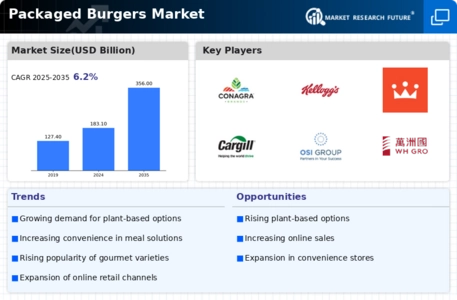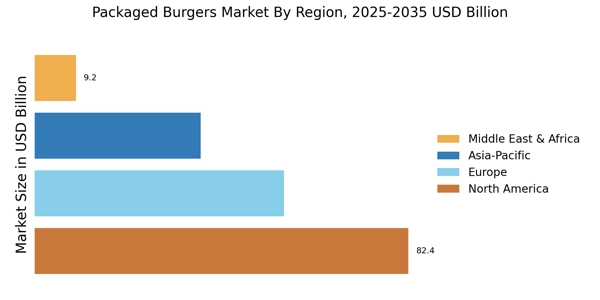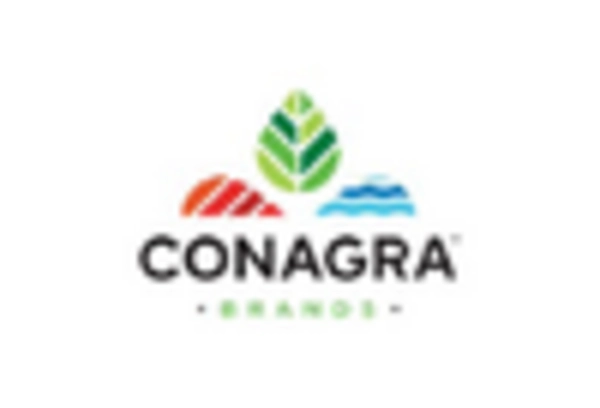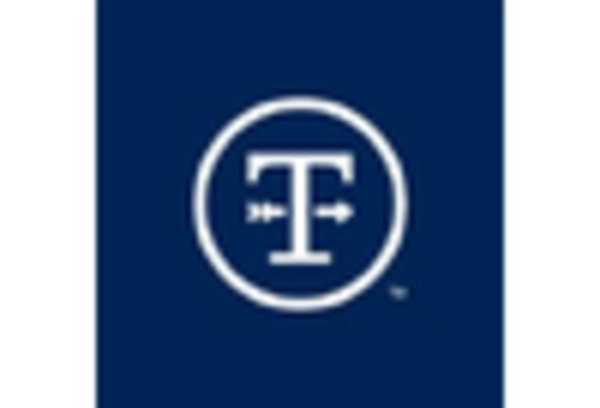E-Commerce Growth
The rapid expansion of e-commerce platforms is reshaping the Packaged Burgers Market. With the convenience of online shopping, consumers are increasingly turning to digital channels to purchase packaged food products, including burgers. This shift is supported by data indicating that online grocery sales have surged, with a notable percentage of consumers preferring to buy food items online. Retailers are responding by enhancing their online presence and offering home delivery services, which could potentially increase market penetration. The ability to reach a wider audience through e-commerce may also encourage brands to innovate and diversify their product lines to meet the evolving demands of online shoppers.
Health-Conscious Offerings
The increasing consumer inclination towards health-conscious eating habits appears to be a pivotal driver in the Packaged Burgers Market. As more individuals prioritize nutrition, manufacturers are responding by introducing products that are lower in calories, fat, and sodium. This trend is evidenced by the rise in demand for plant-based and lean meat options, which cater to a diverse range of dietary preferences. According to recent data, the market for plant-based burgers is projected to grow significantly, indicating a shift in consumer preferences. This evolution in product offerings not only aligns with health trends but also enhances the appeal of packaged burgers to a broader audience, thereby potentially expanding market share.
Innovative Flavor Profiles
The introduction of innovative flavor profiles is emerging as a key driver in the Packaged Burgers Market. As consumers become more adventurous in their culinary choices, there is a growing demand for unique and diverse flavors in packaged food products. Manufacturers are responding by experimenting with various seasonings, sauces, and ingredients to create distinctive offerings that stand out in a competitive market. This trend is supported by data showing that consumers are increasingly willing to try new flavors, which could lead to increased sales for brands that successfully capture this interest. The ability to offer exciting flavor combinations may not only attract new customers but also encourage repeat purchases.
Sustainability Initiatives
Sustainability initiatives are increasingly influencing consumer choices within the Packaged Burgers Market. As environmental concerns gain prominence, brands are adopting practices that minimize their ecological footprint. This includes sourcing ingredients from sustainable farms, utilizing eco-friendly packaging, and reducing waste in production processes. Data suggests that consumers are willing to pay a premium for products that are marketed as sustainable, which could lead to increased sales for companies that prioritize these practices. Furthermore, the integration of sustainability into branding strategies may enhance customer loyalty, as consumers increasingly seek to align their purchases with their values.
Convenience and Ready-to-Eat Options
The demand for convenience and ready-to-eat options is a significant driver in the Packaged Burgers Market. As lifestyles become increasingly fast-paced, consumers are seeking quick meal solutions that do not compromise on taste or quality. Packaged burgers, which offer ease of preparation and consumption, are well-positioned to meet this need. Data indicates that the sales of ready-to-eat meals have been on the rise, suggesting a growing preference for products that save time. This trend may encourage manufacturers to develop innovative packaging and preparation methods, further enhancing the appeal of packaged burgers to busy consumers.


















Leave a Comment